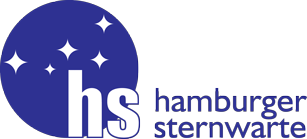 Excursion, Saturday, August 30, 2025
Excursion, Saturday, August 30, 2025

7 Towers of Lübeck (2 Cathedral, Aegidien, Petri, 2 Marien/St. Mary, Jakobi)
and St. Catherine without tower (former Franciscan monastery)
(Nuremberg Schedel Chronicles (1493), f 265-266)
Train RE 8 (11410):
09:06 h - Hamburg Hauptbahnhof (Central Railway Station)
09:52 h - Lübeck Hauptbahnhof - Platform / Gleis 6
For the excursion, you need either the Schleswig-Holstein-Ticket or the Deutschlandticket.
Please look at Public transport and Deutschlandticket
Lübeck: the chief city of the Hanseatic League 1358 - an association of towns for the protection of trading interests.
Lübeck, 14 km from the Baltic Sea.
"Liubice" (Old-Lübeck, founded by Slavs in 819); it was re-founded as "Lubeke" by Adolf II Count of Schauenburg and Holstein in 1143,
Transfer of the diocese to Lübeck in 1163 - the first cathedral in Lübeck was consecrated,
1226 Free Imperial City by Frederick II.
The Stecknitz Canal (1398) greatly facilitated the shipping of salt from Lüneburg.
Lübeck was in the 15th century the second largest city (after Cologne) in northern Germany, with 22,000 inhabitants.
After the "discovery" of the Americas, Lübeck's economy declined, and Hamburg with the connection to the North Sea became leading in trade and leading the Hanse.
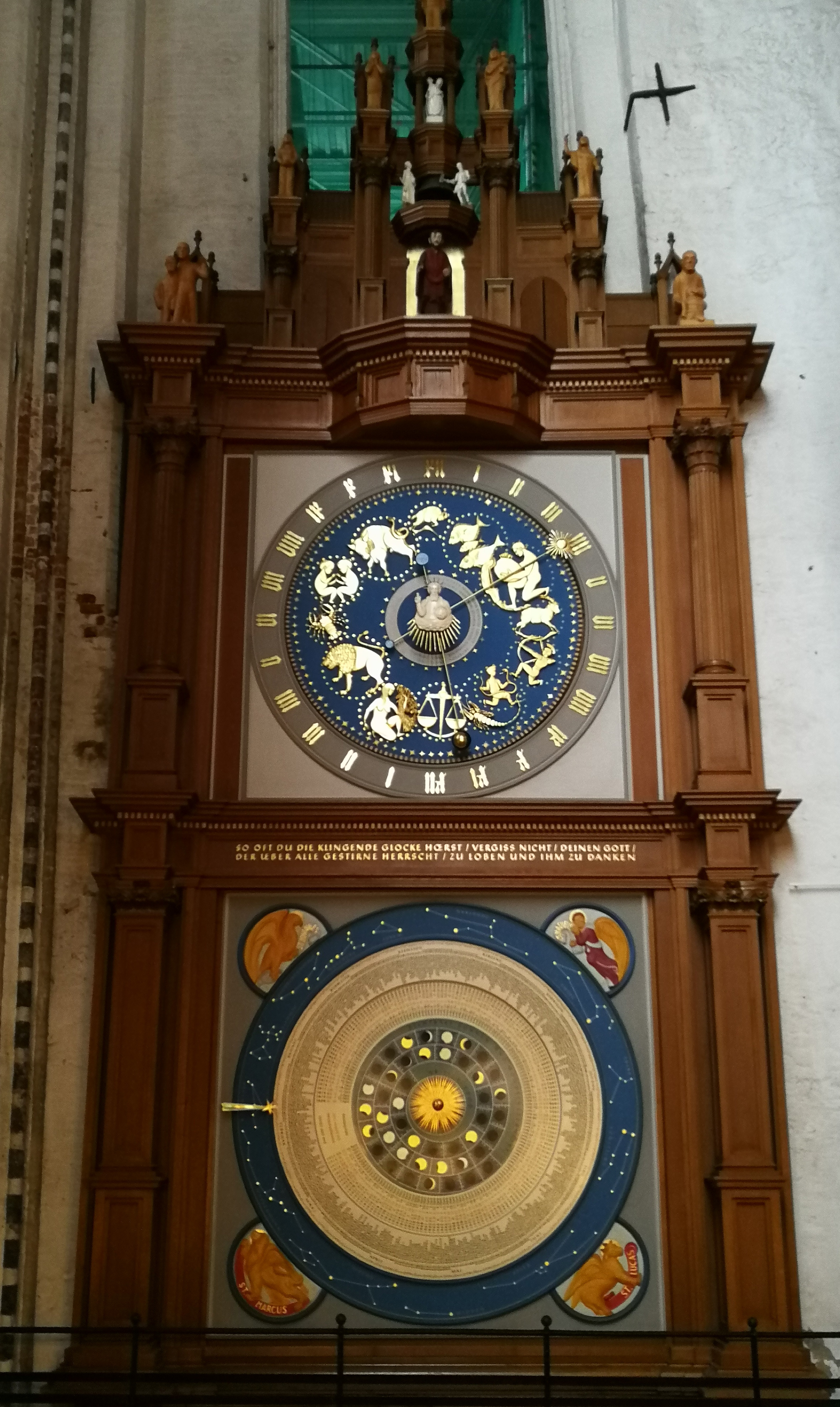
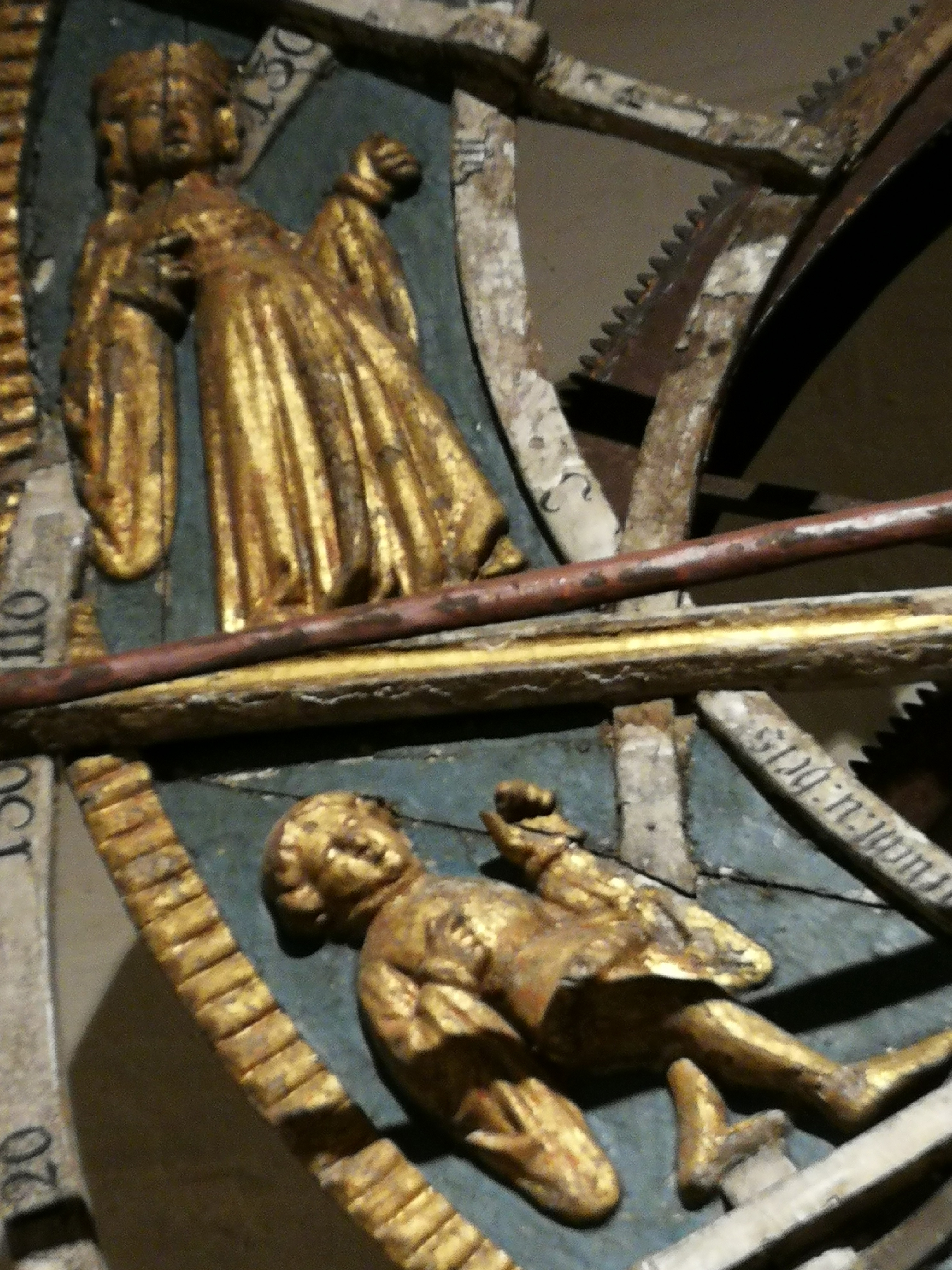
Left: Lübeck, Astronomical Clock in St. Mary's church,
Right: original Astronomical Clock in St. Annen-Museum
(Photos: Gudrun Wolfschmidt)
Highlight: Lübeck, Astronomical Clock (1405/07)
St. Annen-Museum & Marienkirche/St. Mary's church
- Marienkirche/St. Mary's church (*1251),
the mother church of Brick Gothic style -
the highest brick vault in the world at 38.5m, 120m long, and twin towers 124m high
Astronomical Clock (reconstructed after WWII),
"Dance of Death", 15th-century frescoes,
Schüsselbuden 13, 23552 Lübeck
- St. Annen-Museum:
here you see the rest of the original Astronomical Clock (1405/07);
Collections from the Middle Ages and the Early Modern Period
- City Walk: Lübeck, Historical Town
(UNESCO World Heritage-listed Old Town since 1987) --
Holstentor (1478) - "Concordia domi, foris pax" ("Concord at home, peace outside"),
Salt storage buildings in the style of the Brick Renaissance (1579 to 1745)
at the river Obertrave (the salt was transported from Lüneburg, needed for conservation of fish)
Burgkloster/Castle Monastery (1227) and
Castle Gate / Burgtor (1444) - remnants of the medieval fortifications.
Rathaus (city hall), built in Gothic and Renaissance style,
Alleys and courtyards in Lübeck.
- European Hanseatic Museum Lübeck - 800 years of Hanseatic history
An der Untertrave 1, 23552 Lübeck
- Museum Holstentor - Holsten Gate Museum (1464-1478),
Holstentorplatz, 23552 Lübeck
- St. Catherine's Church (1300),
church of the former Franciscan monastery
Königstraße, corner of Glockengießerstraße, 23552 Lübeck
- Niederegger Marzipan Salon (history of marzipan)
J.G. Niederegger GmbH & Co. KG, Breitestrasse 89, 23552 Lübeck
- Museum House - Hanseatic City of Gdańnsk/Danzig,
Engelsgrube 66, 23552 Lübeck
Train RE 8 - every half hour
(you can decide, when you want to go home):
21:09 h - Lübeck Hauptbahnhof - Platform / Gleis 7
21:53 h - Hamburg Hauptbahnhof (Central Railway Station)
21:37 - Lübeck Hauptbahnhof - Platform / Gleis 7
22:25 h - Hamburg Hauptbahnhof (Central Railway Station)
Back to the table of contents


Classical Observatories and UNESCO World Heritage
Workshop of IAU C.C4 and WG "Windows to the Universe --
Classical and Modern Observatories"
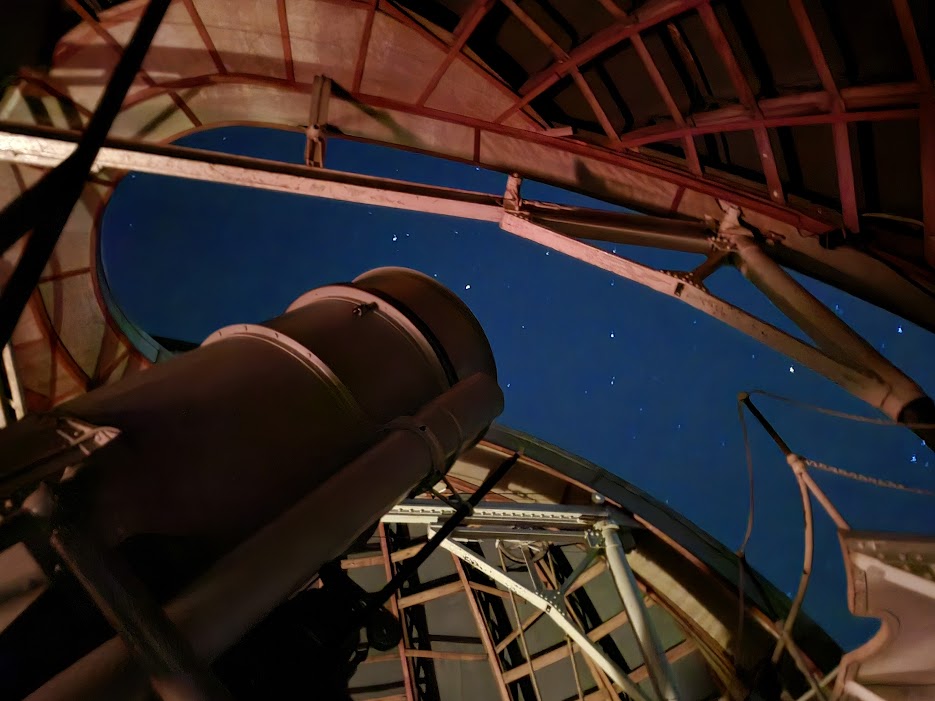
1-m-Zeiss Reflecting Telescope (1911) of Hamburg Observatory (Photo: Gudrun Wolfschmidt)
Aims and Scope
This workshop aims to highlight the outstanding astronomical heritage represented across many European observatories and consider their merits as candidates for seeking UNESCO World Heritage status.
UNESCO awards World Heritage status to sites judged to have "Outstanding Universal Value". Astronomical connections have provided the basis for several such assessments, for instance monuments with alignments to the solstices (e.g., Newgrange in Ireland), observatories with connections to time keeping and navigation (e.g., Greenwich, UK), and mechanical models of the Solar System (e.g., Eise Eisinga Planetarium, Netherlands).
The classical form of the astronomical observatory originated in Europe with many well-preserved examples from the 17th century onwards still extant. In some cases these observatories also remain as active centres of astronomy, where research, education and/or public outreach in the sciences are conducted. These provide prime candidates for possible future nominations for UNESCO World Heritage. In Ireland the historic observatories of Armagh, Birr and Dunsink have come together to pursue such a nomination. Birr and Dunsink have just been placed on the UNESCO Tentative List for Ireland by the Irish Government (Department of Housing, Local Government and Heritage, 18 April 2025).
The intent of this session is to highlight the outstanding astronomical heritage represented across many European observatories and ask whether they be suitable for inclusion in the IAU's list of "Outstanding Astronomical Heritage" (OAH). This may also include observatories that no longer exist but have made significant scientific contributions (e.g. Gotha in Germany, Uraniborg in Denmark).
Further, we ask whether some might also be considered for future trans-national UNESCO nominations arising from several countries? While the astronomical heritage must be foremost in the applications, an extensive management plan for the site preservation is also a requirement. Within this plan the cultural and educational values of historic observatories will need to prominent. Thus, attaining UNESCO World Heritage status will also leverage important societal values such as the public communication of science.
We will also consider the fate of observatories which are no longer in active use. For instance, in Potsdam the main dome has been transformed into a library, whereas in contrast to Cambridge and Meudon where they are falling into disrepair.
Questions that might be asked include:
- The requirements for an observatory to be considered as Outstanding Astronomical Heritage?
- The requirements needed to consider an observatory as a monument for accreditation for UNESCO Word Heritage?
- What defines a "Classical Observatory" from a cultural viewpoint?
Challenges that are encountered in running Classical Observatories include:
- How to keep historic telescopes working and relevant to audiences?
- What can we learn from historic observatory libraries and archives?
- How can an observatory on the UNESCO World Heritage list proceed with undertaking modern cutting-edge research?
- How do historic observatories manage the balance between visitors' expectations (black holes - wow!)
versus historic reality (transit telescopes and cataloguing - boring!)?
- How might we retain observatory domes once they have stopped being actively used for research?
Abstracts
Deadline for abstracts: May 31, 2025.
Abstract: ca. 500 words, at least 3 references, 3-5 keywords,
up to 2 color images may be included (300dpi)
Please send your abstract to Gudrun Wolfschmidt email and
Michael Burton email
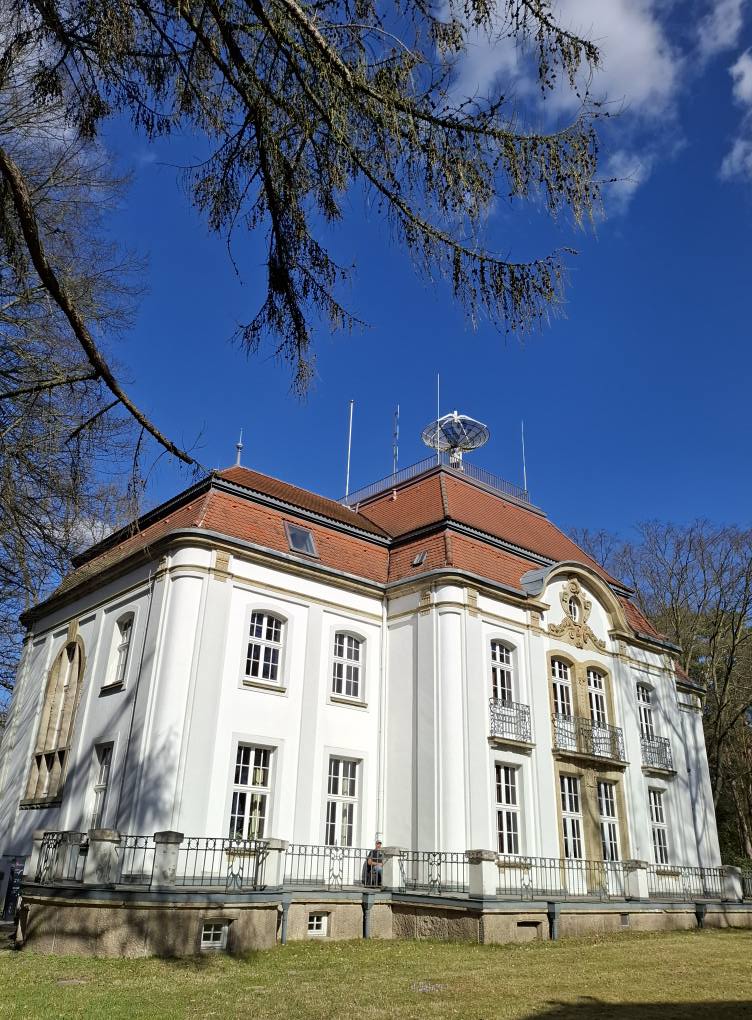
Main Building of Hamburg Observatory
(Photo: Gudrun Wolfschmidt)
Committees
Scientific Organizing Committee (SOC):
- Gudrun Wolfschmidt (University of Hamburg, Germany)
- Michael Burton (Armagh Observatory, UK)
- Peter Gallagher (Dunsink Observatory, Dublin Institute of Advanced Studies, Ireland)
- Giangiacomo Gandolfi (INAF - Rome, Italy)
- Ileana Chinnici (INAF - Osservatorio Astronomico di Palermo, Italy)
- David Valls-Gabaud (CNRS, Observatoire de Paris, France)
- Rebekah Higgitt (National Museums Scotland, UK)
Local Organizing Committee (LOC):
- Gudrun Wolfschmidt (Hamburg Observatory, Hamburg, Germany)
Registration and Conference fee
